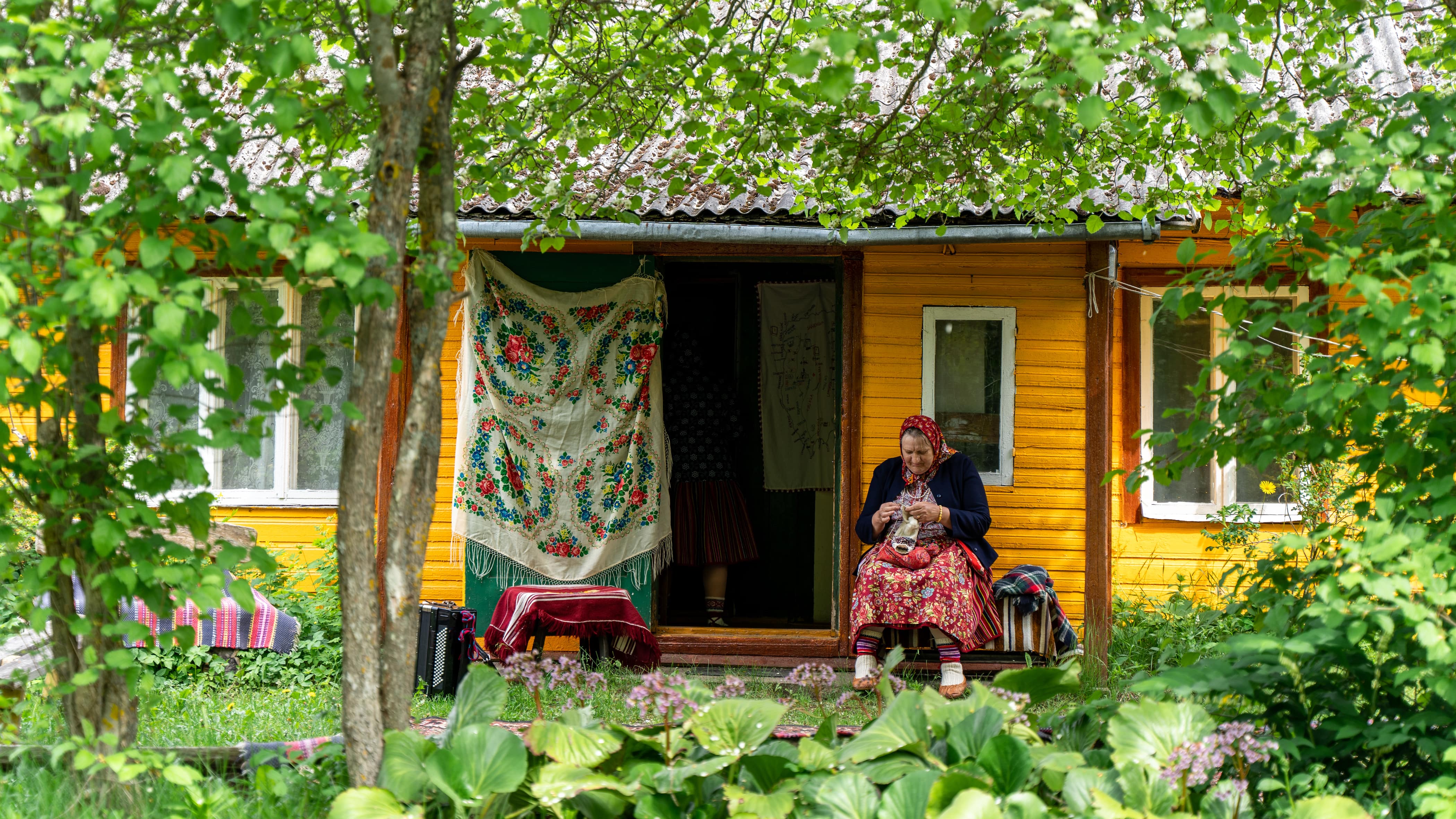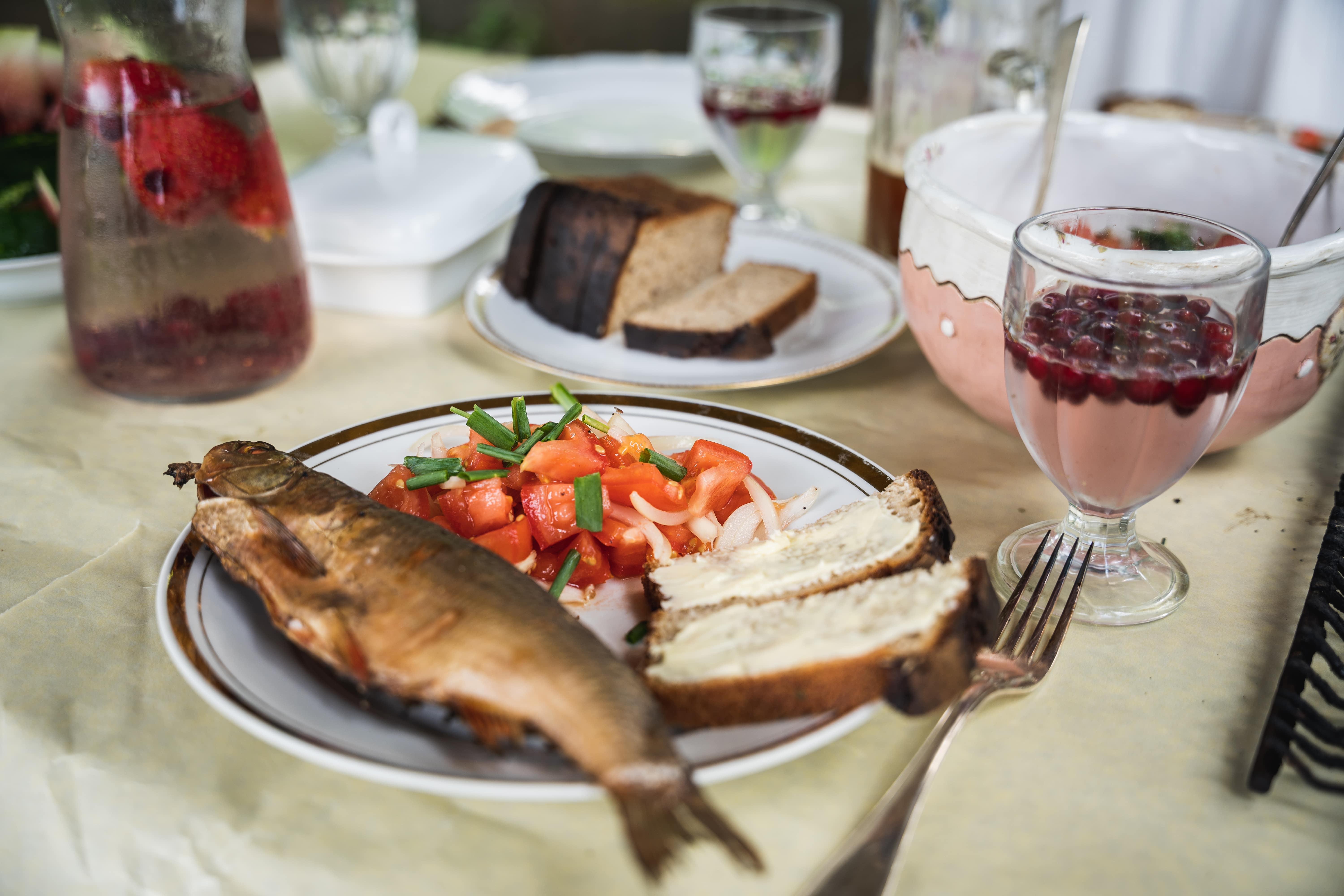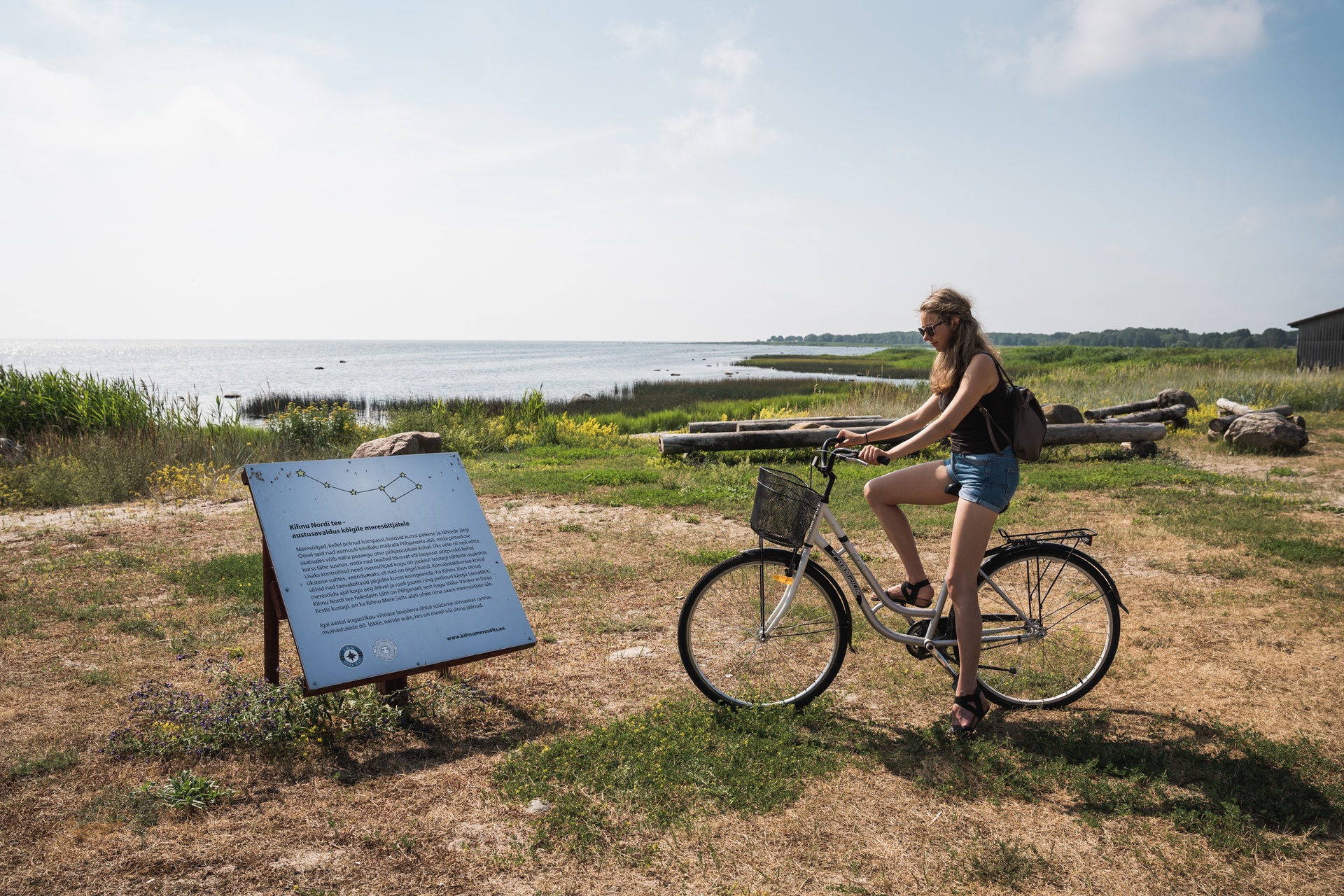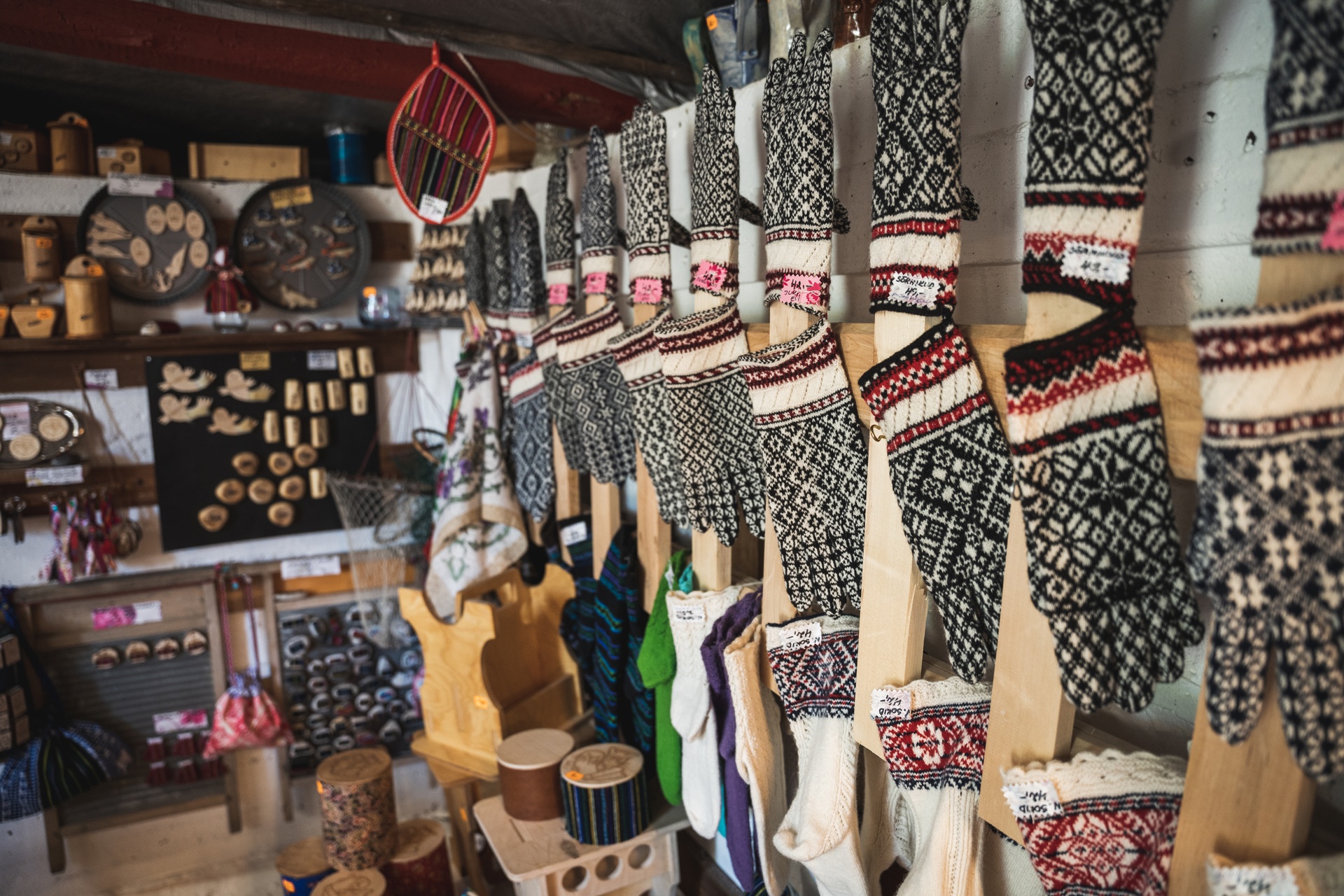
A glimpse of life on Estonia's remote Kihnu Island
Kihnu is known for the colorful skirts worn by island women, but did you know that Kihnu culture goes back hundreds, if not thousands, of years?
Estonia's Isle of Women. Europe's last surviving matriarchy. The island run by women.
Headlines hint at Kihnu Island's reputation, but they're not exactly correct.
As fishermen, Kihnu men typically spent months out at sea. Kihnu women stayed behind and out of necessity, bore tremendous responsibility for day-to-day life. They still do. Women keep the farms going and the children growing while men earn a living as fishermen, on commercial shipping boats, or on the mainland. Foreign journalists have latched on to this particular aspect of Kihnu culture, likely because of how strange it seems to find such a set-up within the confines of the modern European Union.
If Kihnu Island isn't a matriarchy, what is it?
Local guide Mare Mätas is quick to note this inaccuracy. Kihnu culture is not a matriarchy, she explains. She points out that men's work is important for sustaining island culture, though their work differs from the women's. Married women hold a higher status, she explains, and divorce isn't common. Before regular ferry service and 5G, men provided a link to far-flung lands, often bringing back new styles of clothing, songs, or even partners for island-bound women. However, their traditional jobs—subsistence fishing, seal hunting, and gathering seabird eggs—and their communal lifestyle don't always align with today's commercial economy.

Source: Martti Volt
With the men out at sea or at work on the mainland, women are the keepers of the home, of the farms, of the culture. They build and repair, caretake, and educate. They manage births and bury the dead. During weddings, they spend so long singing, the guests tire of waiting for the party to start.
This is why Mare prefers the term matrifocal, as women keep the gears running on Kihnu Island, literally and figuratively.
She says the culture could even be considered egalitarian, as the traditional roles of both men and women are essential to the survival of Kihnu Island's unique culture. However, traditional "women's work"—weaving, knitting, and cooking—is far more suited to the tourism economy Kihnu Island depends on today.

Source: Ken Oja
Time-honored traditions and modern tools
Seeing Kihnu women wearing their brightly colored, striped skirts is often a highlight for visitors to the island. Indeed, Mare is wearing one, covered with a floral apron, signifying her status as a married woman. She points out the museum's collection of skirts, describing which colors indicate whether a woman is single or married, or in mourning. She has dozens of skirts in her own wardrobe.

The stripes on the skirt signify status in the community. Married women also wear an apron.
A pocket is hidden underneath, reached through a slit in the side. Many women carry a bag for knitting projects tied at their waist.
The Kihnu cultural space was added to the UNESCO List of Intangible Cultural Heritage in 2008.
The colorful wool skirts, sweaters, and mittens and the wedding ritual featured prominently in the decision. Kihnu Island was first mentioned as an inhabited island in writing back in the 16th century, and many customs go back further than that. For example, their runic wedding songs date back over 2,000 years, to a pre-Christian time of oral tradition and kinship ties.
Kihnu's culture may be old, but it's not stagnant. Along with her wool skirt, Mare wears an Apple Watch to track her steps and checks her messages throughout the day, which involves coordinating a visit from the film crew accompanying an elderly German woman famous for a cooking channel on YouTube. They are set up outside an old farmhouse, awaiting a concert of traditional music and folk dancing.
One woman sits down with an accordion and another tucks a fiddle under her chin. Two women come flying down the road in a small sedan, obviously late for the concert. They join the others who sing along while keeping their hands busy with knitting. They set their work down only to stand up and dance. The leader introduces the musicians and asks the audience members to introduce themselves, clasping hands with the elderly YouTuber. She teases one German, saying he would make a better football player when he says he's a writer. She invites everyone to join in the dance, though no one dares.
Mare apologizes for the lack of musicians. Normally, several youngsters would be part of the ensemble, showing off the singing and dancing skills they learned in school, but the schoolchildren, all 41 of them, have gone to the mainland for a class trip.
At the island's kindergarten and primary school, students learn folk songs and dances, practice an instrument, and take classes in handicrafts and the Kihnu dialect. Students attend high school on the mainland. One day they may leave the island permanently to live elsewhere, either because they want to or because they have to. This is the biggest threat to preserving Kihnu's unique cultural traditions.
It will be up to the younger generation—boys and girls—to keep the Kihnu culture alive.

Source: Martti Volt

Kihnu Lighthouse
The island may be isolated, but Kihnu Islanders are well-connected to the outside world.
Tips for a sustainable visit to Kihnu Island
Highland cows graze in the long grass between the rocky shore and the road, some chest-deep in the water. Yellow wildflowers peek out from craggy rocks. Tall pines puncture grey clouds. Lilac bushes line the road and fence off homes. Their petite purple flowers billow up from the sandy soil next to the lighthouse.
Life on Kihnu Island follows the seasons, as it has for centuries.
The types of seasons have changed recently, though; late May is the beginning of the tourist season, which is arguably just as important as the harvest season.
Mare, like most Estonians, is straightforward. She says she sometimes wishes tourists would simply send money floating down while flying over the island. But she realizes that sharing the island with visitors, at least with those willing to engage with the community, is one way to keep traditions alive.
Scroll through the gallery for green travel tips on Kihnu.
Kihnu Island is the ideal destination for slow travel.
When deciding to visit the island, know that your choices contribute to keeping Kihnu culture alive. Savor simple, home-cooked meals. Try your hand at knitting. Be brave and join the dance. Stop and smell all the flowers, especially the lilacs.
Get inspired
Last updated
05.06.2024



